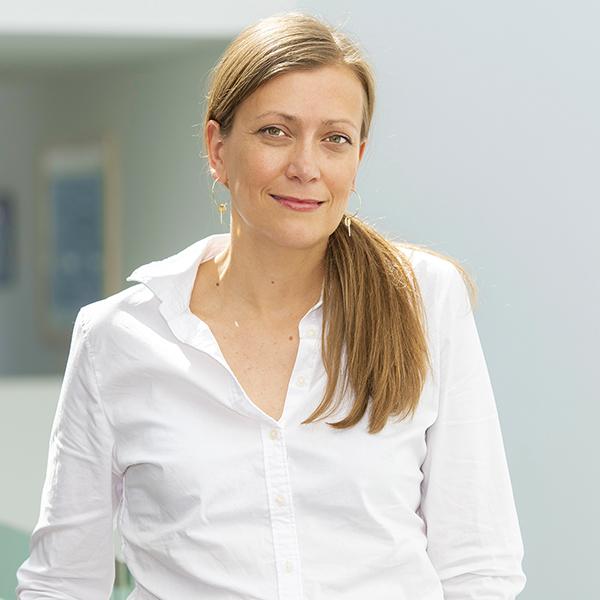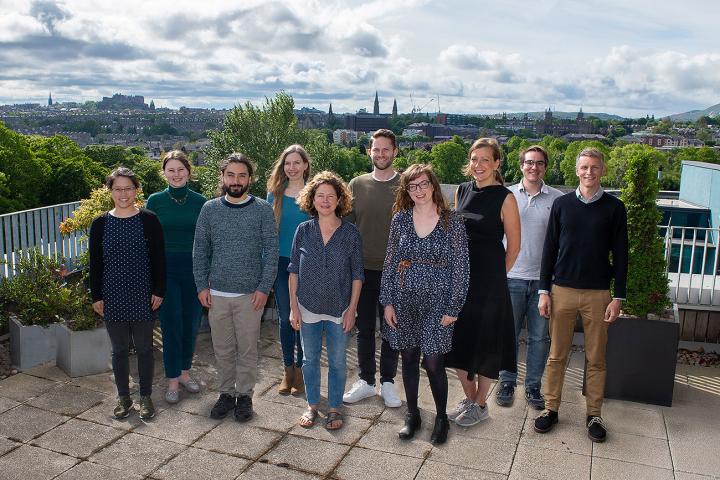Pleasantine Mill Research Group
Genetics of Cilia Biology

Research in a Nutshell
Cilia are specialized microtubule-based structures found on the surface of most mammalian cells. They play key sensory and sometime motile functions. When cilia go wrong, either through defects in their assembly or function, they can have devastating effects on human development (also known as congenital anomalies or birth defects) or postnatal health, where cilia dysfunction underlies blindness, kidney failure and infertility. This broad group of genetic disorders is termed ciliopathies. We know that hundreds, if not thousands of genes are involved in building and maintaining this highly conserved organelle. But for the most part, we know very little about which and how individual genes are required for specific ciliary functions.
My lab uses the power of genetics combined with the latest molecular and cellular biology tools to address the following questions: How do we build the basic blueprint required for core cilia function? How is this basic genetic program elaborated on for specific ciliary functions, like ciliary motility? What can we learn about cilia gene function from human disease alleles? How can we turn broken genes back on with 'genome surgery' and are ciliopathies reversible?
There are four areas of interest in our lab:
- Genetic screens We have carried out phenotype-driven forward genetics (ENU mutagenesis) screens and reverse genetics (candidate siRNA) high-content cell-based screens to dissect the functional complexity of cilia.
- Human disease genetics We work closely our clinical genetics collaborators to identify and characterize human ciliopathy alleles. We use the CRISPR/CAS9 system of gene editing to build better models of human disease candidates to correlate genotype with cellular phenotype and overall health. We examine the effects of these mutations integrating microscopy, transcriptomics and proteomics. Taken together, we hope to develop evidence-based strategies for clinical management of ciliopathies, and perhaps even a cure.
- Super-resolution and live imaging Primary cilia are small, dynamic structures whose imaging is very much limited by these characteristics in terms of time and resolution. We aim to build tools to better capture events on a finer-scale across time and space using confocal, super-resolution and electron microscopy in tissues.
- Therapeutic genome editing Understanding how different cell types in our bodies respond to genome editing events is key to leveraging this powerful technology in the clinic. We generate novel genome editing reporters to track in real time the differential ability to target primary cells and control editing outcomes in vivo, thereby enabling us to drive efforts towards ‘genome surgery’ so as to correct rare diseases like ciliopathies.

People |
|
| Prof Pleasantine Mill | Group Leader |
| Dr Peter Tennant |
MRC/ERC postdoctoral research fellow (Lab manager) |
| Dr Daniel Dodd | ERC postdoctoral research fellow |
| Dr Emma Hall | MRC postdoctoral research fellow |
| Dr Roly Megaw | Wellcome clinical research fellow |
| Dr Patricia Yeyati | MRC Senior scientist |
| Dr Fay Newton | Fight for Sight research fellow |
| Fraser McPhie | MRC HGU PhD candidate |
| Sophie Nakford | UoE Global Research/Principal’s Career Developments scholarship PhD candidate |
| Linda Nguyen | MRC Precision Medicine PhD candidate (joint Megaw/Mill/Vallejos) |
| Chloe Bortherton | PhD student |
Contact
Publications
- A WDR35-dependent coat protein complex transports ciliary membrane cargo vesicles to cilia. Quidwai T, Wang J, Hall EA, Petriman NA, Leng W, Kiesel P, Wells JN, Murphy LC, Keighren MA, Marsh JA, Lorentzen E, Pigino G, Mill P. Elife. 2021 Nov 4;10:e69786. doi: 10.7554/eLife.69786. PMID: 34734804
- Nucleo-cytoplasmic shuttling of splicing factor SRSF1 is required for development and cilia function. Haward F, Maslon MM, Yeyati PL, Bellora N, Hansen JN, Aitken S, Lawson J, von Kriegsheim A, Wachten D, Mill P, Adams IR, Caceres JF. Elife. 2021 Aug 2;10:e65104. doi: 10.7554/eLife.65104. PMID: 34338635
- A Cell/Cilia Cycle Biosensor for Single-Cell Kinetics Reveals Persistence of Cilia after G1/S Transition Is a General Property in Cells and Mice. Ford MJ, Yeyati PL, Mali GR, Keighren MA, Waddell SH, Mjoseng HK, Douglas AT, Hall EA, Sakaue-Sawano A, Miyawaki A, Meehan RR, Boulter L, Jackson IJ, Mill P, Mort RL. Dev Cell. 2018 Nov 19;47(4):509-523.e5. doi: 10.1016/j.devcel.2018.10.027. PMID: 30458140
- ZMYND10 functions in a chaperone relay during axonemal dynein assembly. Mali GR, Yeyati PL, Mizuno S, Dodd DO, Tennant PA, Keighren MA, Zur Lage P, Shoemark A, Garcia-Munoz A, Shimada A, Takeda H, Edlich F, Takahashi S, von Kreigsheim A, Jarman AP, Mill P. Elife. 2018 Jun 19;7:e34389. doi: 10.7554/eLife.34389. PMID: 29916806
- KDM3A coordinates actin dynamics with intraflagellar transport to regulate cilia stability. Yeyati PL, Schiller R, Mali G, Kasioulis I, Kawamura A, Adams IR, Playfoot C, Gilbert N, van Heyningen V, Wills J, von Kriegsheim A, Finch A, Sakai J, Schofield CJ, Jackson IJ, Mill P. J Cell Biol. 2017 Apr 3;216(4):999-1013. doi: 10.1083/jcb.201607032. Epub 2017 Feb 28. PMID: 28246120
Full publication list can be found on Research Explorer: Pleasantine Mill — University of Edinburgh Research Explorer
Partners and Funders

Scientific Themes
developmental genetics; ciliopathies; cilia and centrosomes; cell biology; cell cycle
Technology Expertise
Mouse models (genome editing, disease models, biosensors, reporters); Imaging (confocal, electron microscopy, super-resolution); Cell biology


